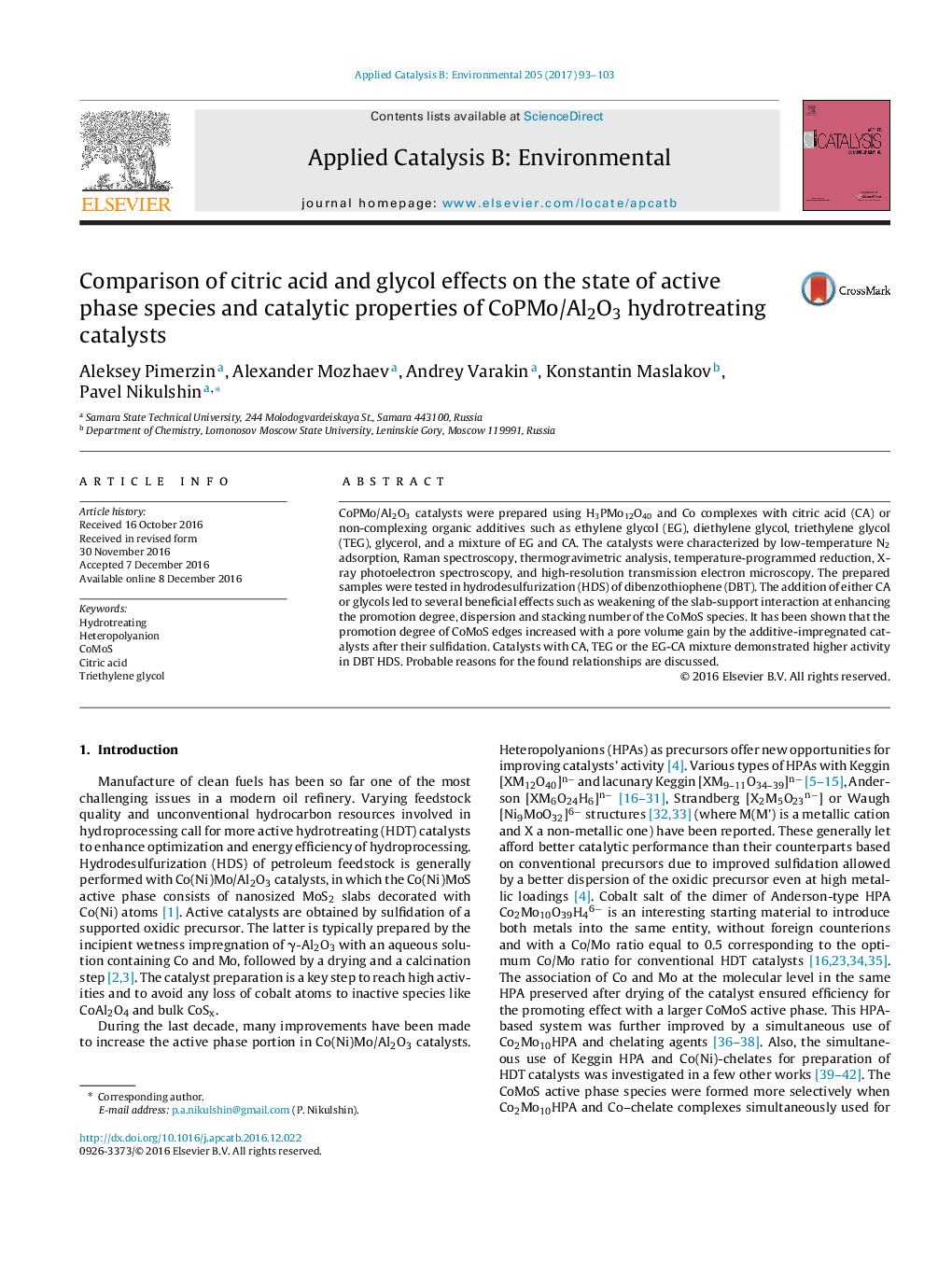| Article ID | Journal | Published Year | Pages | File Type |
|---|---|---|---|---|
| 6454287 | Applied Catalysis B: Environmental | 2017 | 11 Pages |
â¢CoPMo/Al2O3 catalysts were prepared using H3PMo12O40 and Co complexes.â¢Addition of either CA or glycols led to several beneficial effects.â¢CoMoS edge promotion degree increased with a pore volume gain by catalysts after sulfidation.â¢Glycols provide better protection of PMo HPA against destruction than citric acid.â¢Catalysts with CA, TEG or the EG-CA mixture demonstrated higher activity in DBT HDS.
CoPMo/Al2O3 catalysts were prepared using H3PMo12O40 and Co complexes with citric acid (CA) or non-complexing organic additives such as ethylene glycol (EG), diethylene glycol, triethylene glycol (TEG), glycerol, and a mixture of EG and CA. The catalysts were characterized by low-temperature N2 adsorption, Raman spectroscopy, thermogravimetric analysis, temperature-programmed reduction, X-ray photoelectron spectroscopy, and high-resolution transmission electron microscopy. The prepared samples were tested in hydrodesulfurization (HDS) of dibenzothiophene (DBT). The addition of either CA or glycols led to several beneficial effects such as weakening of the slab-support interaction at enhancing the promotion degree, dispersion and stacking number of the CoMoS species. It has been shown that the promotion degree of CoMoS edges increased with a pore volume gain by the additive-impregnated catalysts after their sulfidation. Catalysts with CA, TEG or the EG-CA mixture demonstrated higher activity in DBT HDS. Probable reasons for the found relationships are discussed.
Graphical abstractDownload high-res image (190KB)Download full-size image
